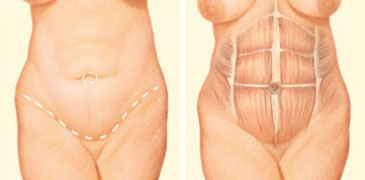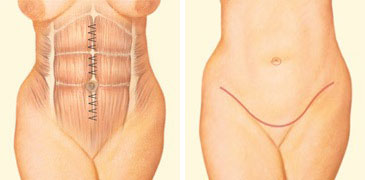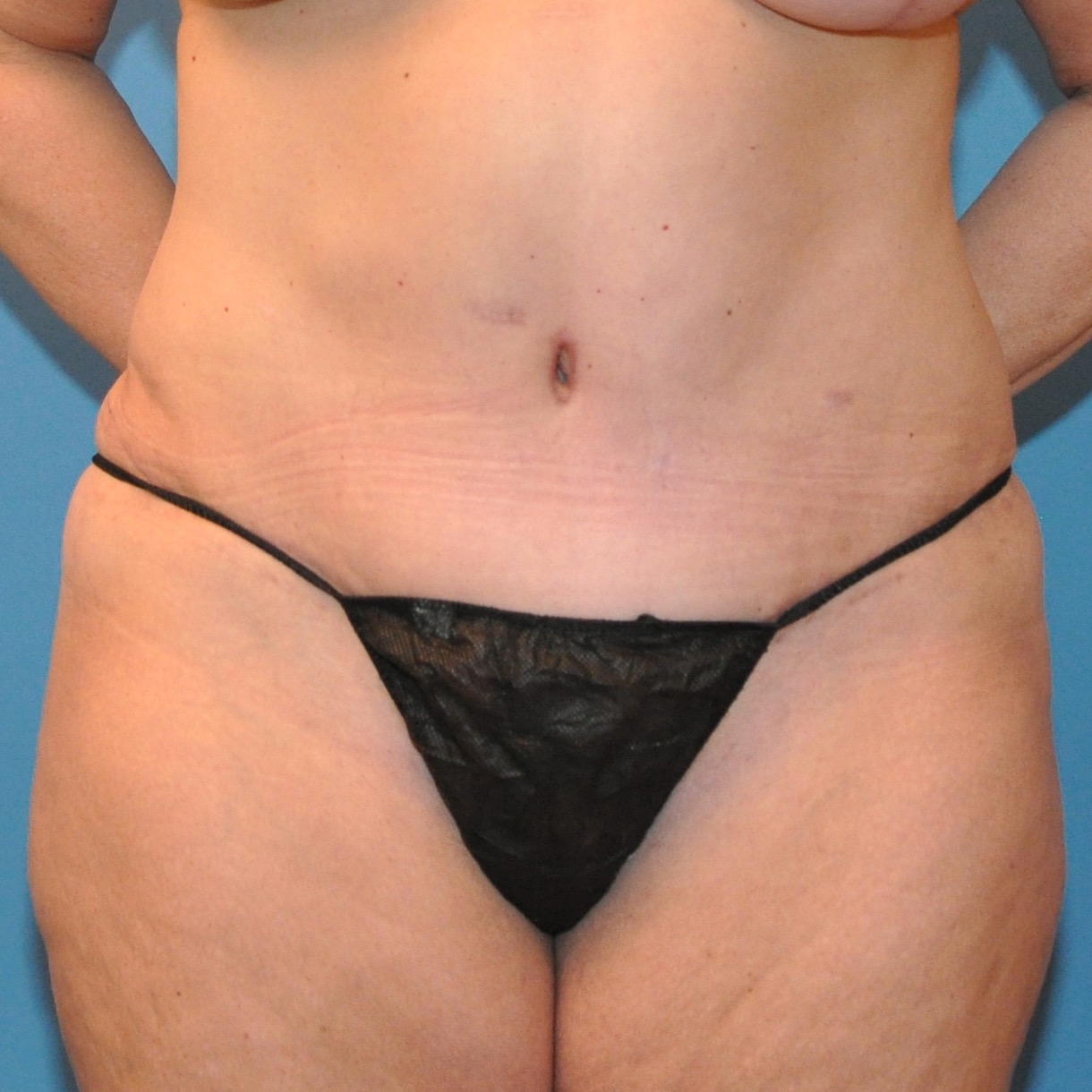
A tummy tuck operation, also knows as an abdominoplasty, offers patients dramatic results. The operation will flatten and contour your abdomen by removing excess fat and skin. During the procedure, your abdominal muscles will also tightened, leading to a more sculpted and defined look.
After childbirth, some women simply cannot get rid of their "mommy belly" no matter how many sit-ups they perform. During pregnancy a natural separation of the abdominal wall musculature may occur and no matter how much these muscles are strengthened, the lower abdominal fullness or "pooch" will never go away.
In addition to lower abdominal fullness, extra abdominal skin laxity can be bothersome as well. Some women can lose a significant amount of weight and are left with sagging skin often accompanied by stretch marks. Some women may have never had a flat belly and wish to have a slimmer, more youthful appearing contour.
During the pre-operative office consultation, Dr. Cooper will take special time to listen to your concerns and answer your questions. He'll examine you and make personalized recommendations designed to fit your unique goals.
The tummy tuck operation is an outpatient procedure. Under the direction of board-certified anesthesiologists you will have either a general anesthetic or an epidural with intravenous sedation depending on your preference. The operation typically takes 3 hours. An abdominal incision is made and is kept very low so that it will be hidden by a bathing suit or underwear.
Next, the skin is elevated off of the abdominal wall, an incision is made around the navel ("umbilicus"), and the abdominal muscles are tightened together with sutures. Drains are left at the time of the operation to prevent the buildup of fluid. Excess skin and fat are removed, the navel is sutured back in its proper position, and the incision is closed with absorbable sutures.


Mini Tummy Tuck
A "mini tummy tuck" is similar to the traditional tummy tuck procedure, however it involves a shorter incision and the skin is only lifted up to the navel. This procedure is ideal for a select subset of patients who need only improvement in the lower portion of the abdomen in order to reach their desired results.
Walking is encouraged after the tummy tuck operation and heavy lifting is discouraged for at least 6 weeks. Moderate abdominal discomfort and tightness are to be expected. You will be prescribed medication to help control unnecessary pain. After the operation, you will wear an abdominal compression garment and you may shower the day after your procedure. Several days later, Dr. Cooper will remove your drains.
A tummy tuck leaves patients with a flatter, toned, and more youthful appearing abdomen. It may also improve confidence, helping patients look and feel slimmer. The results of this procedure are visible right away and will continue to improve as swelling subsides. Scars fade considerably over time.


Although complications are uncommon, they include infections, bleeding, fluid collections, delayed healing and, though rare, blood clots in the legs or lungs. Dr. Cooper will review all the risks and benefits with you prior to your procedure and discuss the ways that these risks can be minimized. Dr. Cooper prescribes Lovenox (a blood thinner) for all of his tummy tuck patients. Patients take this after their operation to prevent blood clots in the legs. Walking around, which you will be doing as soon as you get home from your operation, also prevents blood clots in the legs.
Click here to view the gallery!
What If I Get Pregnant After a Tummy Tuck?
When Will I Walk Straight Again after my Tummy Tuck?
Should I Lose Weight Before My Tummy Tuck?
Is It Okay if I'm Smoking Cigarettes Before My Tummy Tuck?
Do I Need to Have My Muscles Repaired at the Time of My Tummy Tuck?
Why Will I be Prescribed Lovenox after My Tummy Tuck?
![]() I would recommend him to all my friends in a heartbeat.
I would recommend him to all my friends in a heartbeat.